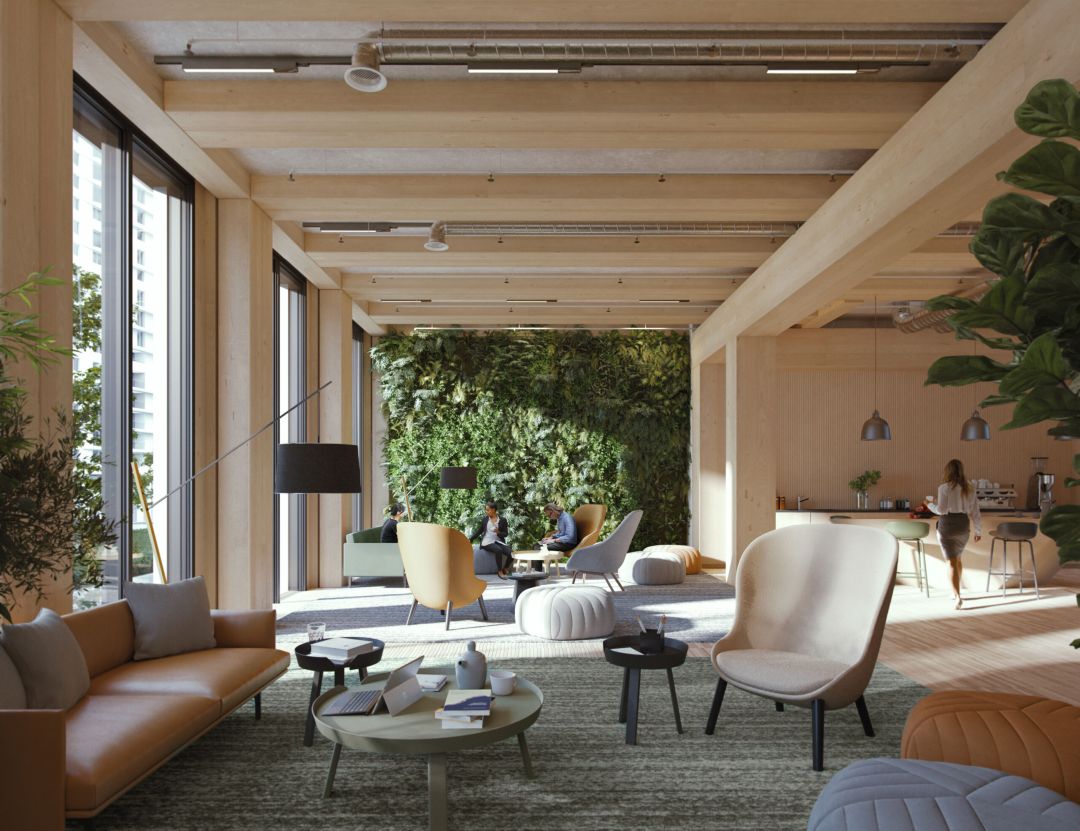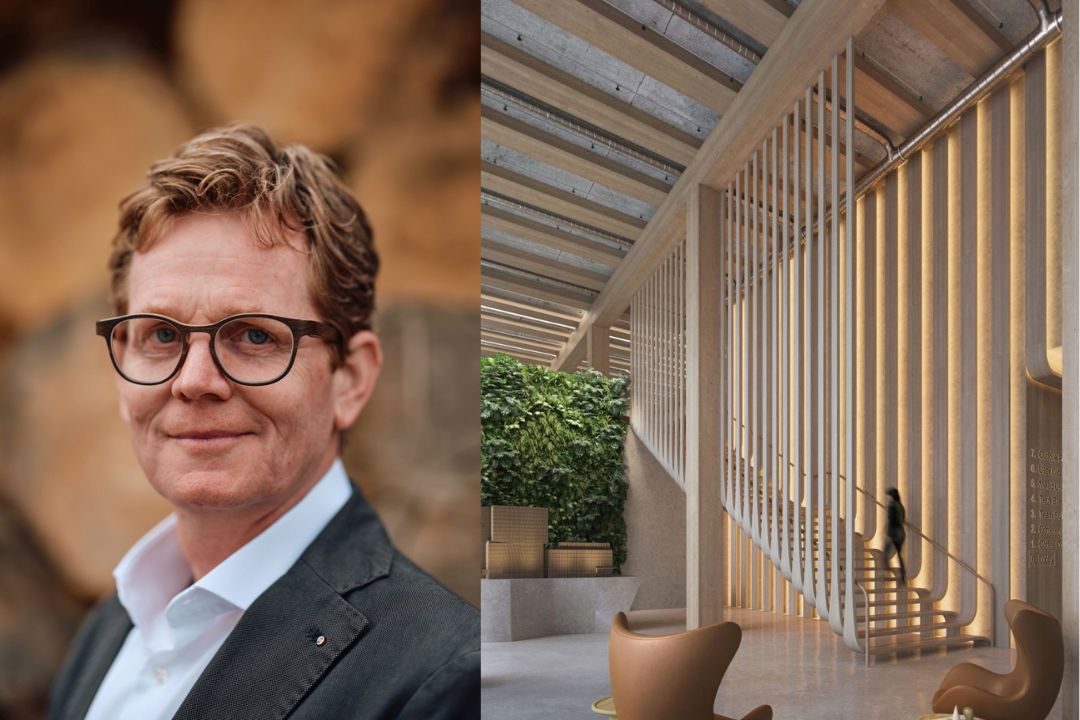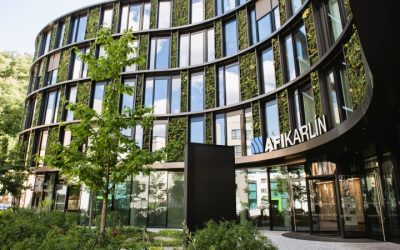The Austrian developer UBM used the pandemic as an opportunity to rethink its priorities. The more obvious of these was to halt new investments in hotels, traditionally a key product for the company. But its CEO hit upon another, more ambitious idea – wood. That is, to ramp up the company’s use of the renewable building material across its entire development program.
The idea grew out of a 2019 initiative within the company to come up with a progressive idea for the future, say Bernhard Egert, UBM’s Head of Timber Construction. The winning idea was to use wood for one of its buildings in its residential and office project Baranygasse in Vienna. Then things escalated, so now UBM is employing a wood-hybrid construction method for the entire new urban quarter Leopold Quartier. “This is a hard project,” admits Egert, since the buildings were originally designed with concrete in mind.
 But the idea gained momentum within UBM, which now has a total pipeline of 200,000 sqm of wooden buildings due for construction over the next three to five years. In the Czech Republic, this includes one of the buildings in its residential project Arcus City. And this isn’t just some passing fad, says Egert: 50% of all new UBM construction will be from wood. To some extent, going bid on wood is a matter of pride of being a “first mover” says Egert. But there’s also a degree of pragmatism, because one of the complications with using wood is that there’s a serious lack of experts to lead such projects. “Many developers who are trying wood don’t have a permanent timber construction team. At UBM, we have five people.” Two are in Frankfurt (working on UBM’s Timber Pioneer office project), two are in Munich (Timber Factory) and one is in Vienna. But there’s also just a handful of contractors who are able to work on the sort of major commercial project UBM has in mind. “Lots of companies can do four or five storey buildings, but to build them with 10 to 12 storeys, there are only five or ten that can do this.”
But the idea gained momentum within UBM, which now has a total pipeline of 200,000 sqm of wooden buildings due for construction over the next three to five years. In the Czech Republic, this includes one of the buildings in its residential project Arcus City. And this isn’t just some passing fad, says Egert: 50% of all new UBM construction will be from wood. To some extent, going bid on wood is a matter of pride of being a “first mover” says Egert. But there’s also a degree of pragmatism, because one of the complications with using wood is that there’s a serious lack of experts to lead such projects. “Many developers who are trying wood don’t have a permanent timber construction team. At UBM, we have five people.” Two are in Frankfurt (working on UBM’s Timber Pioneer office project), two are in Munich (Timber Factory) and one is in Vienna. But there’s also just a handful of contractors who are able to work on the sort of major commercial project UBM has in mind. “Lots of companies can do four or five storey buildings, but to build them with 10 to 12 storeys, there are only five or ten that can do this.”
On the upside, the advantages go beyond the hugely positive impact it has on the developer’s carbon footprint. The biggest difference is speed and precision, because the parts are prefabricated in production halls based on BIM designs. Wood may seem like part of a nostalgic return to traditional building materials, but Egert says the 3D design and build techniques have already been in use for a couple decades. “The production machines have been connected with the drawing programs for more than 20 years,” he says. But because the material is so light, it’s far simpler to transport than concrete panels where just one wall can be placed on a truck at a time.
Egert admits that wooden buildings are becoming something of a status symbol at the moment. But he points out that it makes a big difference who’s building it — and for what purpose. “The difference between our projects and the ones you read about on LinkedIn is that we have to build it first and then find an investor. If a company builds its headquarters in wood, they’re just doing it on their own. They can always decide to raise their budget and make it more exclusive if they want. We don’t have that luxury – our projects have to be competitive.”
Also in ThePrime
Revetas converting office projects into resi rental portfolio






